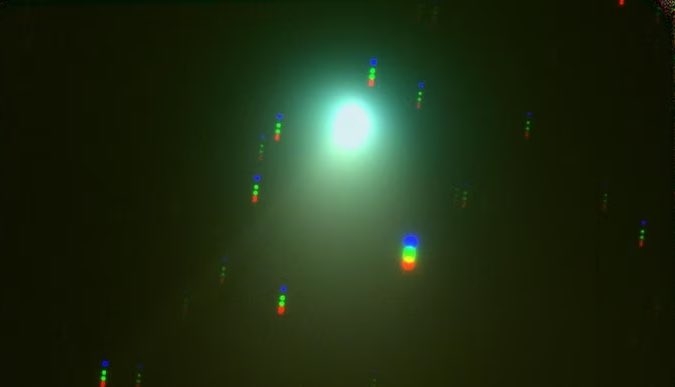India's Chandra telescope captures comet that last came to Earth 50,000 years ago
The comet is currently travelling through the inner planets on its way to the Sun and is expected to reach orbit on January 12
Total Views |
New Delhi, January 12: In a major development, days after it is being reported that a newly discovered comet, that last arrived in the skies about 50,000 years ago, is once again going to visible in the skies in the coming weeks, now Himalayan Chandra Telescope on the foothills of Mount Saraswati in Ladakh's Hanle has captured the first images a comet.

Comet C/2022 E3 (ZTF) was photographed by astronomers using the Himalayan Chandra Telescope, which is operated by the Indian Institute of Astrophysics (IIA), Bengaluru. The comet is currently travelling through the inner planets on its way to the Sun and is expected to reach orbit on January 12.
The image was captured when the telescope was tracking the fast-moving comet, and the background stars appear to move in a trail. IIA released three images of the comet that were taken serially and then stacked together. The individual images were taken in red, green, and blue filters by astronomers Margarita Safonova, Mulchand Kurre & Bharat Chandra.
Comets consist mostly of ice coated with dark organic material. They have been referred to as dirty snowballs and may yield important clues about the formation of our solar system.
Comet C/2022 E3 (ZTF) was first discovered in March last year by the wide-field survey camera at the Zwicky Transient Facility when it was already inside the orbit of Jupiter. While it was initially believed to be an asteroid, it began developing a tail as the Sun's influence began vapourising the ice. At the time of its discovery, it was shining with a magnitude of 17.3.
Astronomers expect that the comet will be visible in the skies above Earth in the early week of February and could be seen with the naked eye if it glows at a higher magnitude. "This comet will pass closest to the Sun on 12 Jan & may be visible to the naked eye by early February. It is a very rare occasion as the comet will come back after 50,000 years!" the Department of Science & Technology said in a tweet.
Officials at the Indira Gandhi Planetarium in Lucknow are preparing to support the enthusiasts by providing them with binoculars and a telescope to witness the cosmic show if bad weather does not hamper the view.

